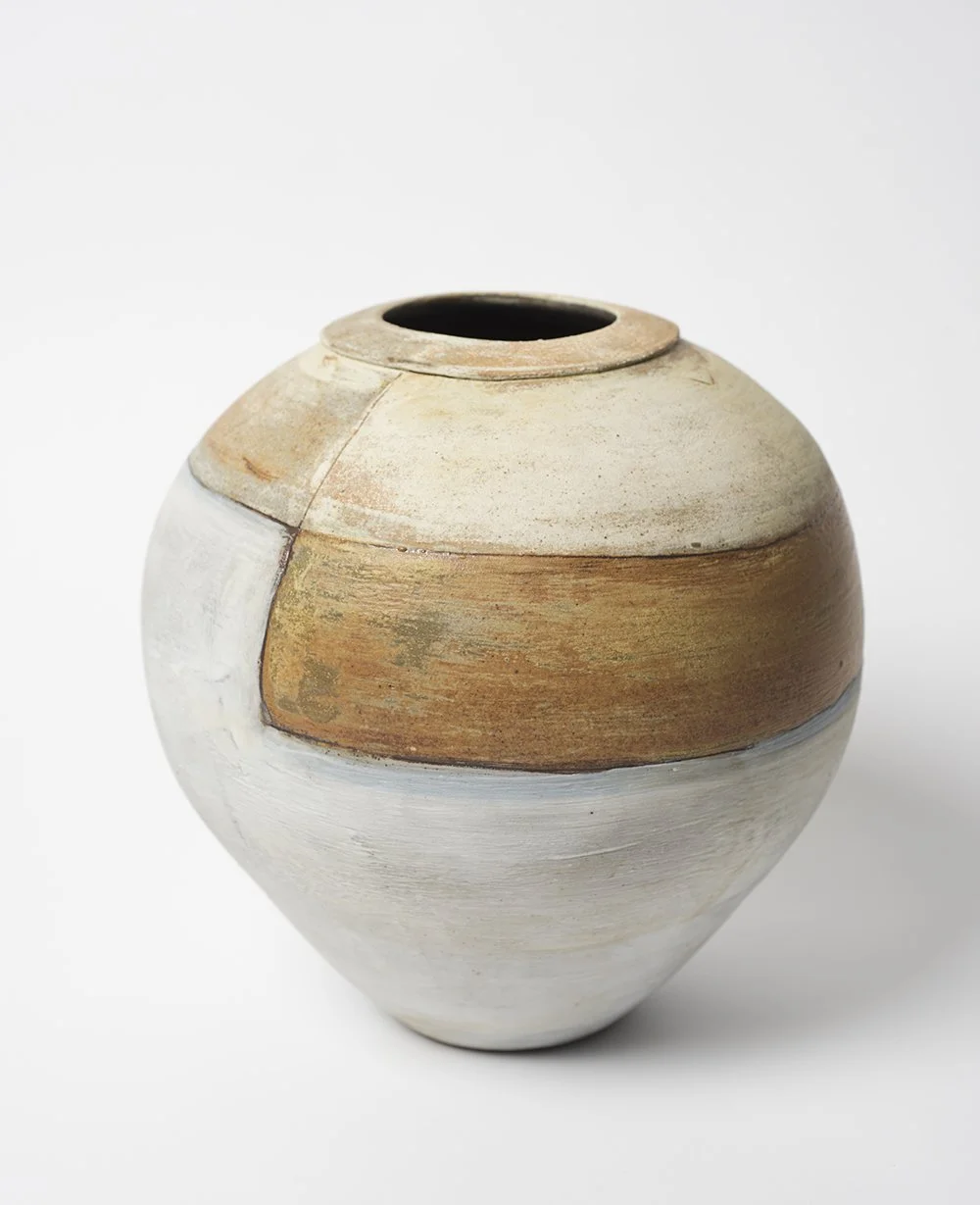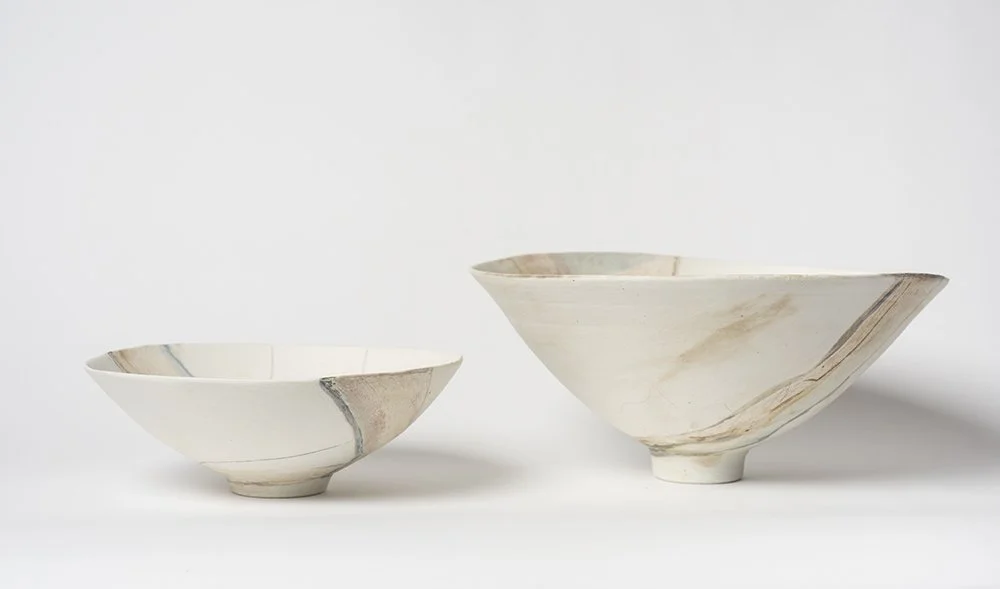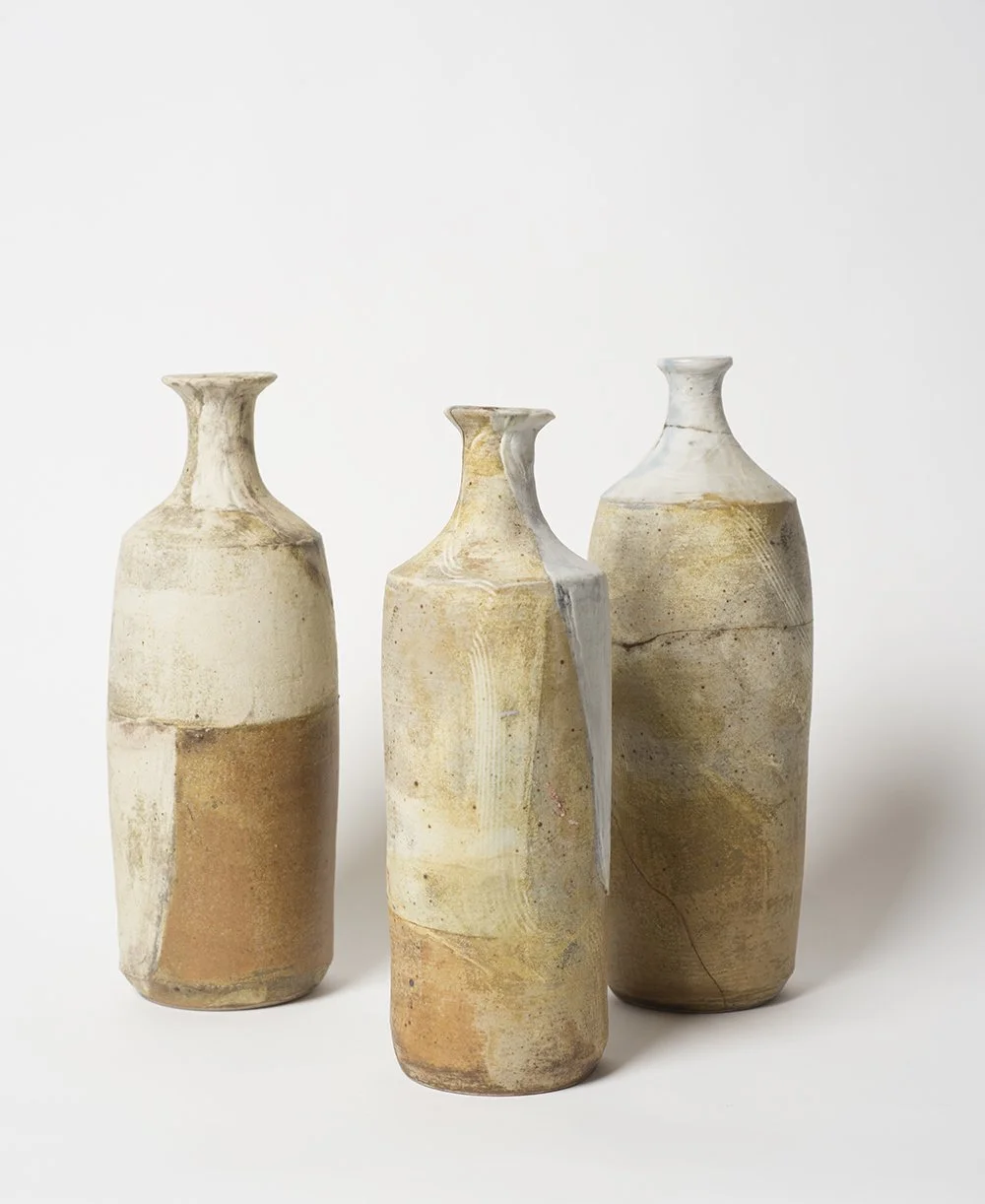Dry Sand - Wet Mud - Moving Earth
2017 / Falkner Gallery, Castlemaine, Victoria
This exhibition is the realisation of a constant and ongoing discussion, and, the natural extension of a friendship. We have brought together a show that reflects the delight we share observing a moving earth, and showcases the connections we feel exist between our work.
We both live and work in central Victoria, travelling through the aptly named Whipstick Forest to meet each other. When John and I get together we often have wasps’ nests and chunks of termite mounds in our hands and take great interest in sharing our latest finds. Our discussion ranges from the process of a grub moving through wood, to the story in the marks across a new painting or pot, to the state of the bush surrounding us.
In this show we have chosen to focus our enthusiasms on the tracks and traces we find in the dirt around us. We have explored how mud is moved by insects and birds, and by us! The collaborative pieces in the exhibition offer up the sculptural prowess of termites. We have both been taken by the intricacy and monumentality of the structures and present them as precious sculpted sand.
John adds:
“Over the last two-year period when we have been working away at our normal projects we found that certain works sometimes seemed to run on curiously parallel lines. Difficult to summarise but we found that these synchronies seemed to occur when our tracks ran through mud and clay. We are both generally pretty obsessed with the materiality, the quiddity of stuff.”
John’s considerable reputation is built around a deep understanding of, and passion for, the natural world. The way John responds to what he sees, hears and feels is embedded in his understanding of the interconnectedness of nature. His prints and paintings are layers of information, demonstrating exquisite technique next to pure chance. He uses these processes to tell the complex story each little part of the natural world inhabits.
For example, in a variation on the theme of human/insect synchrony, shown in this exhibition, John has made several relief prints from the burrowings and patterns made by beetle larvae underneath the bark of trees. These intricate calligraphies map the life histories from egg to grub to emergent beetle as it flies off to start another cycle.
In my work, I look closely at the lines left on the surface of the earth by the movement of the natural world, including humanity. I am interested in how these marks tell the story of time passing, how journeys become a tiny trace in the dirt, yet often accumulate to show greater changes within the landscape
For this show I have introduced new forms to my practice to try to find the right vessel to describe the precious cargo of a wasp’s nest or termite mound. I have used traditional shapes of bottles and flasks to describe the containment and movement of precious substances, in my imagination joining the movement of liquids with the flight of emerging wasps or a river of ants.
Both John and I have a deep respect for using the traditions and skills of our crafts to tell our stories, and discuss the many shared techniques and processes between ceramics, painting and printmaking.
John explains:
“We spend a lot of time moving it around. So, as well as being fascinated by clay and minerals and wood we also love the action and performance of throwing our media and materials around. So, with these two inclinations in common, performing with stuff, we then found that some of the work seemed to be in parallel with some other equally obsessed performance artists. Over the summer mud dauber wasps built their clay nests inside our studios, and in two cases actually on the surface of paintings, while, somewhere south of Darwin termites had moulded ochre coloured clay into their mounds. Once fired it turned out that the clays used by these insect artists were well chosen to turn into pottery. These objects then invited the performance of the printmaker to make prints and rubbings from them. In this exhibition you will see how these prints, when shown with the ceramic matrix echo the marvellous rubbings from ancient Chinese pots and reliefs.”
We have worked on this show by playing, carving, inlaying, flooding, drying, layering, lifting, building, stretching, scraping, cutting, scoring, printing, rubbing, and firing. Without these processes neither John nor I, nor the wasps nor the ants, would have the vocabulary with which to work.
Importantly for both of us, the physical process and material remain evident and active in both our practices. For John, the paper is as important as the drawing, offering not only surface but depth and space, his work becoming an equal play of idea, process and material. I aim for the same balance in my work.
When we assembled our work we were intrigued to find how the works of ourselves and our insect collaborators mirror each other. This show celebrates the extraordinary beauty we see in the dry sand and the wet mud, and allows us to respond to our experience of the moving earth.
Sarah Ormonde / March 2017
Works
Photography: Ian Hill

























